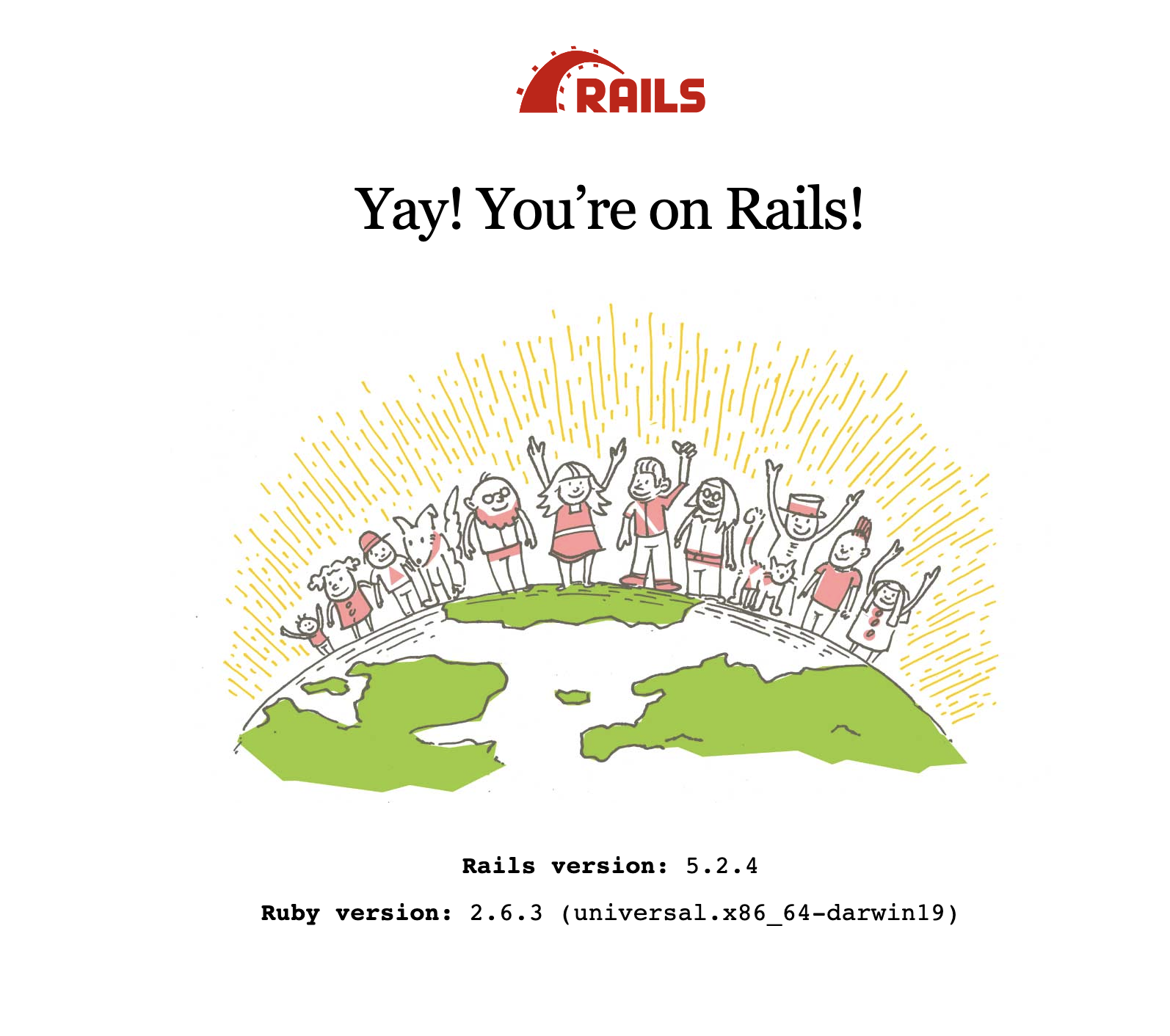Version:
- Rails 5.2.4 on Mac OS X Catalina 10.15.2
- SQLite version 3.29.0
Environment
Install
Railson your computer# Firstly you should have installed the Ruby 2.6.5 $ gem install rails -v 5.2.4 $ rails -v #check your versionSetting up the Sqlite3( The Sqlite 3 is the defalut database by Rtails)
$ brew install sqlite3Install the
YarnandChromeDriver$ brew install yarn $ brew cask install chromedriver
# You should find a empty folder and change the current directory
#
$ pwd
$ rails new testprojects
$ cd testproject
$ rails db:migrate
$ rails server
$ rails about # show the details of created Rails project
# $ bundle exec rails about
=> Booting Puma
=> Rails 5.2.4 application starting in development
=> Run `rails server -h` for more startup options
Puma starting in single mode...
* Version 3.12.2 (ruby 2.6.3-p62), codename: Llamas in Pajamas
* Min threads: 5, max threads: 5
* Environment: development
* Listening on tcp://localhost:3000
Use Ctrl-C to stop
rails new <NAME> command. Type these url http://localhost:3000 in your browser.
0.0.0.0.$ rails server -b 0.0.0.0
generate logs the files and directions. When you create the controller, you can also create the static pages by this command. It means you can build your website by Ruby script.$ rails generate controller kernel hello goodbye
$ cd /app/controllers & ls
application_controller.rb kernel_controller.rb
concerns
$ cd .. && cd ./views/say && ls
goodbye.html.erb hello.html.erb
kernel components for the Rails project.
kernel_controller.rb- the kermel module to control the view layer. The pages the rb file controls are in the path/views/kernel. And the ruby files have created two methods to pass the parameters.
hello.html.erbandgoodbye.html.erbare created by the script and they are static page in Rails.
Static and Dynamic Pages
/public and /app/viewfolder.Ruby sentences into erb files. Now you have built your first dynamic page.$ vim /app/views/kernel/hello.html.erb
<h1>Say#hello</h1>
<p>
Find me in app/views/say/hello.html.erb
The year is <%= @time.year %> # To insert the variables from the controller
</p>
$ vim /app/controller/kernel_controller.rb
class KernelController < ApplicationController
def hello
@time = Time.new
end
def goodbye
end
end
# This example indicates the ways for users to control the website pages by ruby files.
Models : maintaining the state of the application. It can handle with the various interface and communication.
View : generate the user interface and is based on the data in the model.
Controller : orchestrate the application and schedule the process of the application.